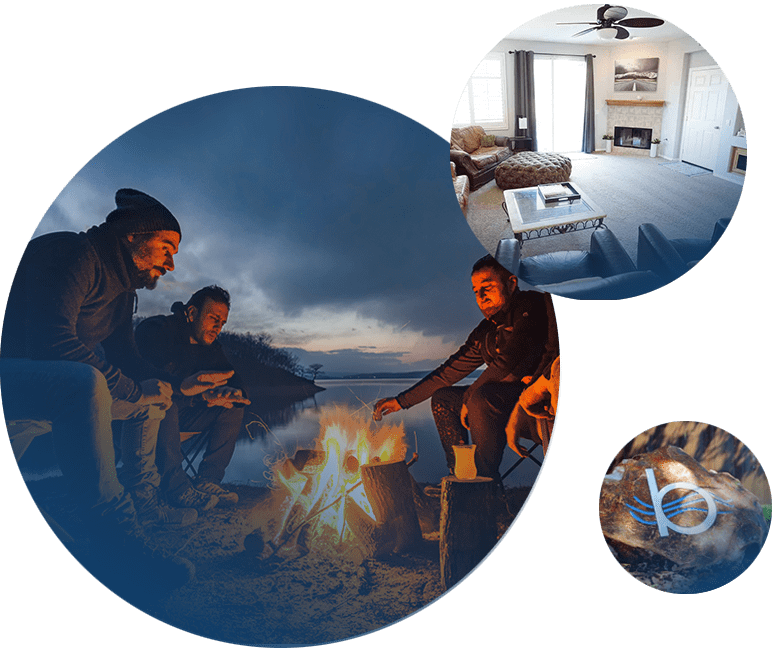


If you are in recovery from addiction and looking for a program, you may be interested in learning more about sober living arrangements. Many people confuse sober homes with halfway houses. Both are transitional living arrangements designed to support individuals recovering from addiction. While the two have some similarities, they also have distinct differences in purpose, structure, and rules.
A halfway house, also known as the transitional housing program (THP) in California, typically serves individuals who have completed a period of incarceration or are on probation or parole. It aims to help people transition back into society by providing housing, structure, and support services. In California, halfway houses are part of the transitional housing program the Department of Corrections runs.
Halfway houses can be government-funded or privately operated and often have a contractual relationship with the criminal justice system. They are typically larger residential facilities and may house more residents. The focus is on providing a structured environment that facilitates reintegration into society.
Halfway houses often have more stringent rules and regulations than sober homes, particularly for residents with a criminal justice background. These rules may include abiding by a curfew, attending mandatory counseling or treatment programs, seeking employment or participating in job training, and refraining from criminal behavior. Random drug testing is also common in halfway houses.
In a halfway house, the length of stay is often determined by the requirements of the criminal justice system or parole/probation conditions. Depending on the individual's progress and compliance, it can range from a few weeks to several months.
Some halfway houses require residents to pay rent, usually on a sliding scale. Sometimes people also must pay for therapy and other services required to remain at the halfway house and fulfill probation or parole standards.
The primary purpose of a sober living program is to provide a stable and supportive environment for individuals in early recovery from addiction. It aims to bridge the gap between an inpatient treatment facility and independent sober living, making it an ideal choice for people who have finished inpatient rehab. The focus is on promoting sobriety, personal growth, and the development of skills necessary for long-term recovery.
Sober living programs are often privately owned and operated by treatment centers or nonprofit organizations. They may consist of houses or apartment complexes where residents live together. The facilities are designed to create a recovery-focused community and may offer various amenities, such as group meeting spaces, healthy meals, and communal activities.
Sober living programs generally have specific rules and guidelines to ensure a safe and supportive environment. These rules may include maintaining sobriety, participating in 12-step meetings, paying rent and expenses, actively seeking employment or educational opportunities, adhering to curfews, and contributing to household chores. Random drug testing is often conducted to ensure sobriety compliance.
The length of stay in a sober living program can vary depending on individual needs and progress. Some programs have a recommended minimum stay of a few months, while others may provide long-term housing options for individuals who require ongoing support.
Sober living does not usually take health insurance because it is more of a living situation than a therapeutic program.
Both sober living programs and halfway houses offer transitional living arrangements, but their purposes and structures differ. Sober living programs focus on supporting individuals in early recovery from addiction, whereas halfway houses primarily serve individuals transitioning from incarceration to society. The rules and regulations may be more lenient in sober living programs, emphasizing sobriety and personal growth, while halfway houses typically have more structured guidelines enforced by the criminal justice system.
Call us to learn more about our sober living options by the sea! We offer recovery, community, and amenities to help you keep on track.
In May 2022, a three-year-old child died from fentanyl ingestion in a home in San Luis Obispo. Like many California overdoses, it took months to conduct a full medical examination. Police now say they have enough information on the child’s death to charge the mother criminally. Authorities have announced they plan to charge the child’s mother, 30-year-old Jennifer Mae Niemann, with reckless endangerment.
On May 4, 2022, police responded to a phone call about a child that was turning blue and not breathing. Emergency personnel arrived and found the unresponsive child. EMTs from the fire department began lifesaving efforts and took the child to the hospital. However, all lifesaving efforts failed. He was pronounced dead later in the day. Toxicology results later showed the child had died from a fentanyl overdose.
Ms. Niemann, the child’s mother, was apparently careless with fentanyl, and due to her actions, the child got ahold of it, resulting in his death. So far, the police have not explained how the child got ahold of the fentanyl. It will likely come up at trial.
Drug overdose deaths involving children aren’t rare. They happen nationwide. They are almost always accidental. States as far away as Kansas had record overdoses for minors in 2020, with 16 teen deaths. Last September, a mother in Iowa was charged with murder when her 22-month-old child died of an overdose.
Ms. Niemann, the mother whose child died in her care in San Luis Obispo, is being held in county jail on four criminal charges. She is being charged with “child endangerment with great bodily injury, enhancement for causing great bodily injury during a commission of a felony, possession of a controlled substance (methamphetamine) and possession of a controlled substance (fentanyl).” Her bail has been set at half a million dollars.
Fentanyl is one of the most potent pain medications in the medical industry. Yet it’s becoming more commonly used as a pain medication, party drug, or adulterant. Many people who ingest fentanyl don’t know that they’re taking it. Fentanyl has become a common adulterant among street drugs, especially drugs sold through anonymous apps. Fentanyl in California has been found in a myriad of drugs seized by police, including cocaine and Molly.
People have accidentally overdosed on fentanyl when they thought they were taking Molly, cocaine, and club drugs. For people who don’t use opioids, this can cause trouble breathing and can make their heart stop. Over 100,000 people died from opioid use disorder in 2021. The majority of these overdoses involved fentanyl. Many of them may have had fentanyl as a contaminant.
People who use opioids are at high risk for overdoses. Fentanyl is a potent drug and can cause significant withdrawal symptoms that make going “cold turkey” nearly impossible. A clinical detox, and treatment, including Medication-Assisted Treatment can help with these issues when a person first gets sober.
If you or somebody you love is addicted to fentanyl or other opioids, help is available. Treatment and detox can help you reclaim your life, and sober housing can give you stability.
Many people who go to drug detox and treatment choose sober housing as the next step in recovery. We offer safety, security, and community for you as you begin your journey in recovery. Give us a call at 760-216-2077 to learn more about our programs.
Addiction is a problem throughout the country, and California is no exception. Much of the focus around the country has been placed on fentanyl use. After all, fentanyl overdoses outrank all other drug addiction deaths. However, meth addiction has been rising steadily in the past several years. As a result, overdoses have been increasing as well.
Pop culture such as the popular show Breaking Bad has helped glorify meth use even as it portrayed characters stuck in horrific cycles of addiction. As pop culture brought a resurgence of popularity to meth, cartels have created more pure products as a result. This has made meth more addictive and more likely to cause an overdose.
According to the California Overdose Dashboard, deaths from illicit psychostimulants such as methamphetamine increased more than 250 percent between 2008 and 2015. California is, after all, a popular state to traffic drugs through. The Central Valley is considered one of the most active meth markets in the US. Some of the meth is manufactured in California, but now it is often more likely to have been made in Mexico and distributed through trafficking networks.
Drug dealers often use fentanyl as an adulterant to other drugs to make it more addictive or more potent. For inexperienced opioid users, this can be a fatal decision. It’s caused people to overdose on drugs like meth or cocaine more often. Combining uppers with downers is also more likely to cause a heart attack.
Many people who take meth with fentanyl don’t know that they’re doing it. However, some meth users also use other hard drugs like heroin or fentanyl.
Many harm reduction proponents recommend all drugs users consider acquiring Naloxone, an opioid reversal drug. Some people even use fentanyl testing strips to test for the presence of fentanyl in other drugs.
Are you or somebody you love looking for a living situation that helps you stay sober? We can help! Our sober living homes offer structure, safety, recovery, and community. Get in touch to learn more about how we can help at 760-216-2077.
Months ago, California was part of a historic lawsuit win against pharmaceutical companies and their distributors. A large payout was allocated to the state after four companies - Allergan, Endo, Johnson & Johnson, and Teva – were ruled to have used false and misleading marketing to push massive amounts of the addictive drug, Oxycontin onto the public.
Early this month, the results were reversed. A state judge in California ruled that the companies cannot be held liable for the raging opioid epidemic; it was simply too much of a reach to hold them responsible using a public nuisance law.
Many Californian counties needed the lawsuit money; they had already planned on how they would spend it. For example, San Diego County would use it to invest in more treatment centers and other public health initiatives.
Much of the money was also slated for opioid addiction training and prevention initiatives. Now, there may not be an expansion of treatment opportunities for people who need them.
Many people are still able to get treatment, even if it’s not what they envisioned. Medical can help people get on waiting lists and get coverage when a bed is available. People with private insurance companies tend to have better options.
Addiction treatment is an integral part of healthcare, but there will still be limitations without new funds. The pandemic also has brought new challenges as well as healthcare delivery options. Some people find that therapy and groups online make treatment available almost everywhere.
Many people find that a sixty or ninety-day inpatient program benefits them, but they’re not ready to return to everyday life right away.
Sober housing options are still available for people who need aftercare and support as they live life on its own terms daily. Sober housing provides an intimate, recovery-focused environment where you can focus on your wellbeing.
If you or somebody you love needs structure and support in their living environment, recovery housing is an option. Call us to learn more about how it works at 760-216-2077.
Every year, thousands of people who live in California get a DUI. It’s one of the most costly consequences of alcohol abuse, yet incredibly common. Many people in recovery initially get sober due to a DUI and stay sober because it improves their lives immensely.
For fines and court costs, California DUI fines can cost you anywhere from around $400 all the way up to $5000, depending on your conviction. Costs of a DUI can range depending on the circumstance when you were arrested. Here are a few scenarios that can impact your fines:
Aside from fines from a DUI conviction, you will probably incur other costs if you’re charged with a DUI. If you have a job, you’ll have to pay for your own attorney, which can cost upwards of $1000. You’ll probably have to pay for your own transportation on public transportation, Uber, or taxi to get to work. If you can’t pay for these things, your family may have to help you pay them, or you will stay in jail until trial.
Alcohol addiction is a serious disease that can cause a lot of wreckage in your life. You don’t have to be alone! You CAN recover and learn to thrive in a community of people focused on recovery.
Sober living is a great experience where you can make new friends with others who share your goals and understand your experiences. Our residences are located in a walkable area with plenty of transportation and access to meetings.
Learn more about our communities by calling us at 760-216-2077.
Do people do better with their recovery when there’s good weather? Many people with substance disorders ask this question. The truth is that the relationship between weather and addiction is tertiary; weather can affect everyone’s mood. Upsetting emotions, in recovery and addiction, are often a trigger to use. So the answer is that yes, weather can affect both addiction and recovery.
When you were using, you may not have even checked the weather for the day. You were probably going to use your drug of choice no matter what. But a rainy day or brittle cold may have made you feel like using was your only choice.
Miserable weather can work like a magnifying glass on negative feelings like depression or anxiety. As a person with a substance disorder, you may associate bad weather with your using days. Anything that brings up negative emotions can be a trigger to use.
Triggers are something everyone in recovery experiences, and you don’t have to use just because you feel bad.
Many people choose to seek recovery in California because of the climate. Beautiful beach and weather, with calm and sunny days can be an inspiration. Many people in recovery in California find that they are able to connect to their higher power on another level when the weather’s good.
When the weather isn’t so nice outside, it’s time to distract yourself and find new ways to enjoy the day. You’ve probably heard the term “save it for a rainy day.” Getting new hobbies, finding friends to spend time with in recovery, and focusing on the positive can help you get through the ugly weather days.
You may be tempted to use rainy or snowy days to isolate yourself. This can be a trap that leads to poor decisions. If you find yourself feeling gloomy or lonely, go to a meeting or call a friend in recovery. Don’t “tough it out” alone. You’re never alone when you’re in recovery. There are people ready to help you whenever you need help.
Sober housing is a caring, safe space where you can get back on your feet and transition back to everyday living when you’re in recovery. Many people come to sober homes to live in a supportive environment where everyone has the same goals – to get clean and reclaim their lives. If you think sober housing might be right for you, please call us to talk about your options. You can reach us at 760-216-2077.
Eminem Shares Previous Struggle With Drugs That Pushed Him To 230 Pounds : LIFE : Tech Times
The brave rapper and entertainer Eminem opens up abut his demons, difficulties and journey to health. We commend this talented artist that could inspire the over 22 million people in recovery from substance use disorders in the United States. We forget it affects everyone no matter our backgrounds, but that the vulnerability and honesty of this amazing artist can bring life to those not seeing beyond the haze of today. Thank you Eminem.
With drinking on the rise and affecting over 33 million people in the United States, efforts to provide alternatives to punitive corrections such as sober living and/or treatment has its own barriers. Society wants them to get help, but not close to them. Alcohol and drug free homes are opening up to attend the demand, but what are the standards and protocols? Is a sober house just any house with agreed rules or should overseeing bodies have close monitoring? Do cities work with these overseeing bodies and how can users and the community have feedback? Research has found that housing for alcohol and drug addiction recovery does in fact reduce crime and impact the overall ambience of a community. The effort lies in communicating these results to society and agreeing on best practices of these residences to have more outcomes rather than dark stories that can pull strong efforts to change the way we view substance use disorders.
Quite fervently and proud of his sobriety, Rob Lowe hits a dubsmash (a lip synching app) out of the park, singing to the sound of music. A galant and poised and most recognizable Lowe of the 90's, Rob seems to be portraying an amazing zest for life and we commend him for this sober living lifestyle gusto.
And finally colleges begin to understand that a wonderful way to keep some students from dropping out is to ensure their safety by supporting and even creating recovery housing near their campuses. Universities listen: alcohol and drugs are an epidemic in your campuses. Recovery is a theme that needs to be spread so that prevention can be the true theme to speak about. Sober residences: these will be the future to the greek system that presently hinders the educational voyage.
http://www.noozhawk.com/article/the_haven_to_open_as_sober_living_for_isla_vista_students_20150221
